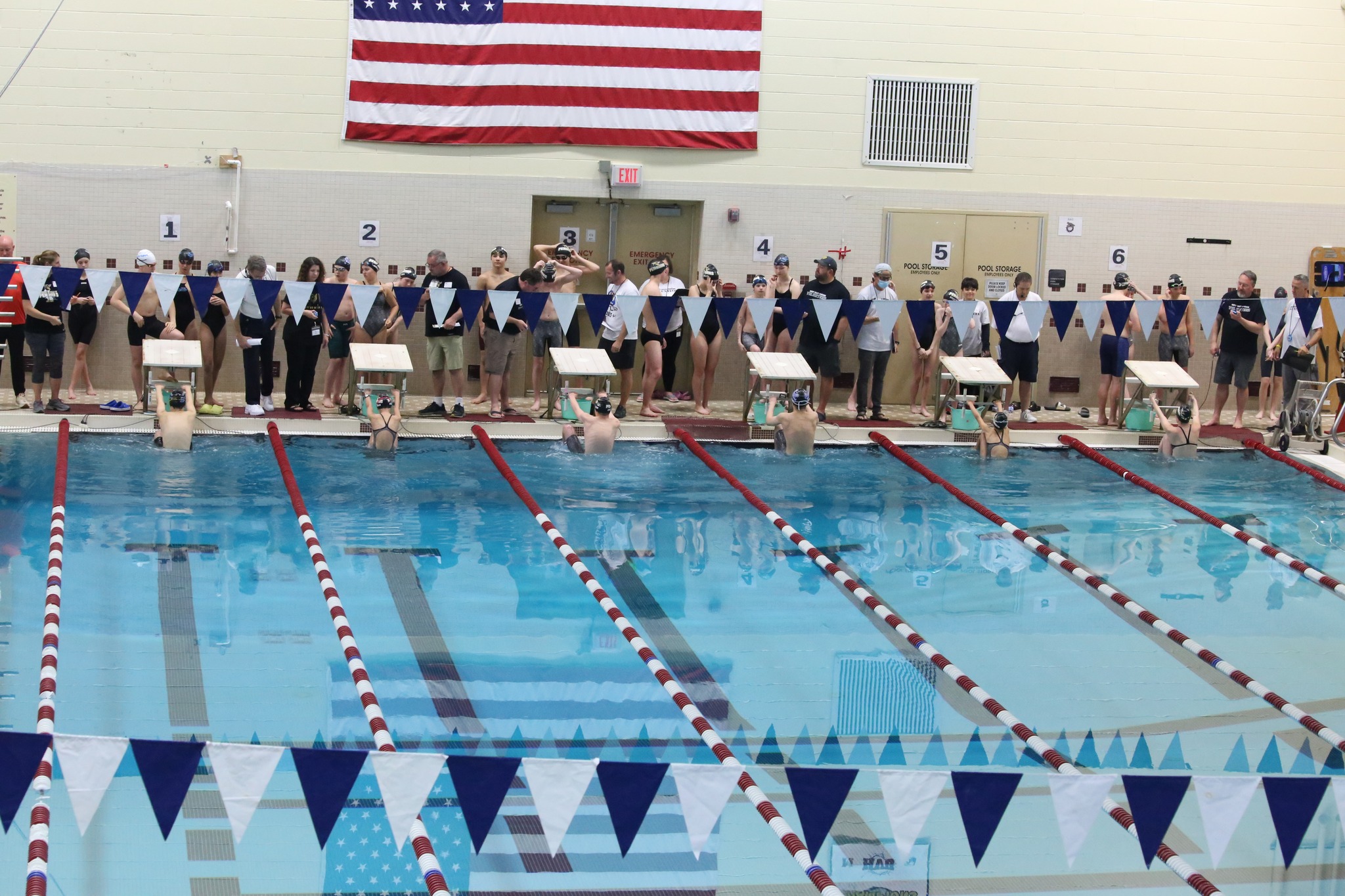Preparing for your first USA Swim Meet
What to pack
- Team suit, team cap, and goggles (Bring a back up pair just in case!)
- Towel (More than one is recommended)
- Pool shoes - sandals, crocs, etc.
- Sharpie (Swimmers will write their event numbers, heat, and lane assignments on their arms at each meet.)
- Warm up clothing for between events (hoodies, sweats, parka, etc)
- Hydration (Healthy drinks only please: water, gatorade, etc.)
- Healthy Snacks (Concessions are sometimes available at meets, but not always.)
Before the Meet
- Check the website or app to verify what your swimmer is swimming, and when. Sometimes session start times can change. This doesn't happen often, but when it does, you can expect an email notifiying you of any changes.
- Have your swimmer’s event names and numbers written on the back of their hand or inside of their arm.
When You Arrive
- Plan to arrive no later than 15 minutes prior to the start of your swimmer’s warm up session.
- Locate the checkin table upon entering the building where your swimmer will check in for that day’s events by highlighting their name and events. (Young swimmers may need your help).
- Swimmers then depart for the pool through the locker rooms. (Please note per USA Swimming Rules, parents are NOT allowed inside the locker rooms at any time.)
- When your swimmer gets on deck, they should look for their coaches or teammates. They will be seated together somewhere on the pool deck at each session and from there will follow coach’s directions for warm up, etc.
- After dropping off your swimmer, head to the spectator area and locate other Penguin team parents. (You’re going to learn a lot from them!)
- Consider purchasing a heat sheet from the admissions table. Heat sheets will tell you what heat and lane your swimmer will be in, and sometimes can give estimates of what time they will be swimming during that session.
General USA Swim Meet Information
For families new to competitive swimming, swim meets can be intimidating. Don’t worry, it gets much simpler the more you go along. Here are some of the basics to help you get started:
- Swim meets are usually held in 25 yard or 50 meter pools. The swim year is divided into two seasons: Short Course, which are held in 25 yard pools (Sept – March) and Long Course, which are held in 50 meter pools (April – August)
- Swim meets are offered at various levels - for the beginner swimmer on up to the most advanced, and for all age groups. The level of meet your swimmer will compete in will depend on how fast their official recorded times are, and how old they are.
- Typically a swimmer will compete in their age category, against their gender, based on how old they are on the first day of the meet. This means that a swimmer may change age group designations in the middle of the season and will start competing against the higher age group at their very next meet. The most common age group categories are: 8 and under, 9-10, 11-12, and 13-14 (often called 13 & Over or Seniors)
- Swim Meets usually take place over weekends, often starting on Friday evening. Saturday and Sunday competitions start in the morning and typically run into the afternoon. To control the length of the meet, swimmers are limited to how many events they can compete in each day – typically three or four per day (excluding relays). Be sure to check the meet information (and look for an e-mail the week of the meet) to determine at what time your child might be swimming (they sometimes vary). Either way, you can expect a session to last about 4 hours from warm-ups to the final heat (again, depending on the number of swimmers and events offered). In a few cases, meets are scheduled for a single evening (usually Friday evening). In these meets, all age groups swim in the same session, and the meet typically lasts about 2.5 - 3 hours.
- USA swim meets are run solely by volunteers, each critical to the success of the meet. The meets are organized and run by the local swim club — parents and swimmers just like you. So, be patient when things get long or troubled.




